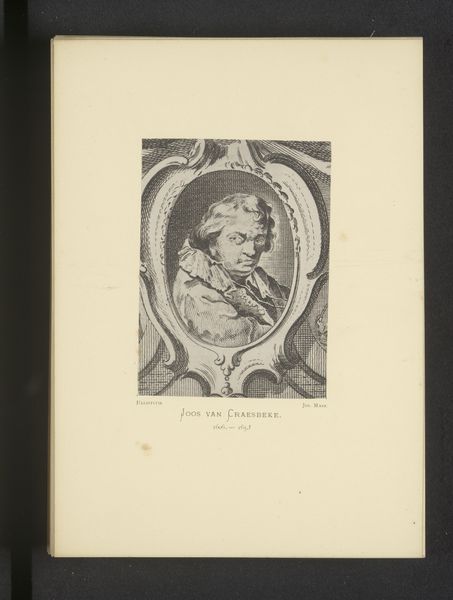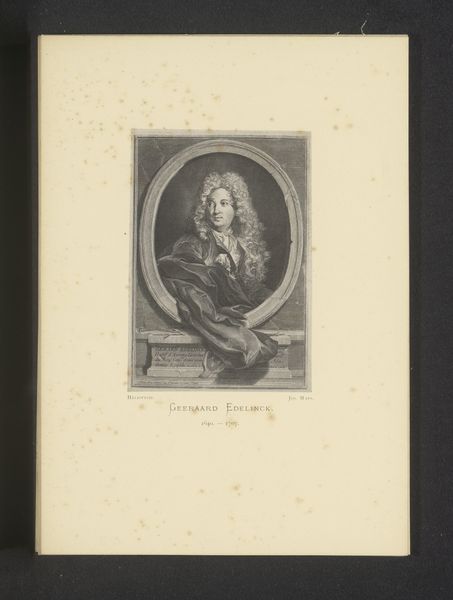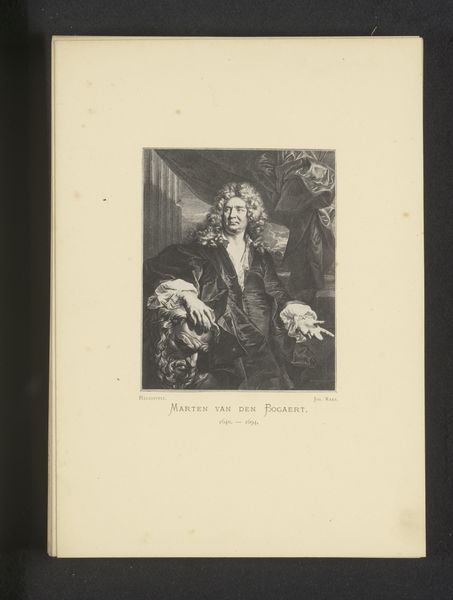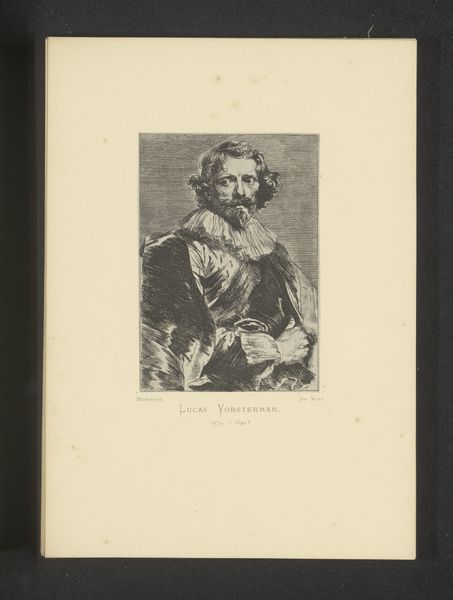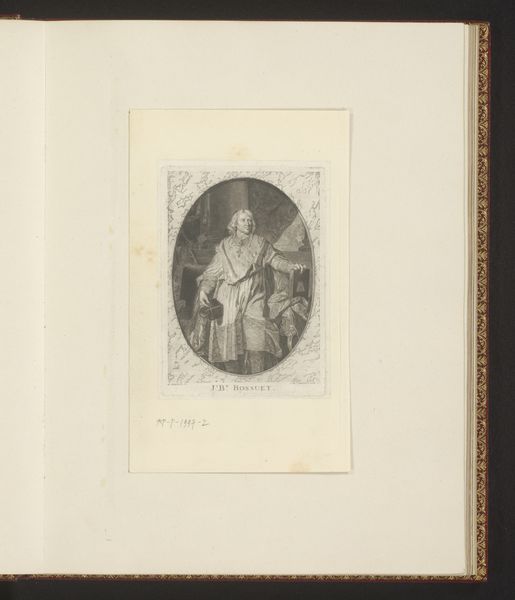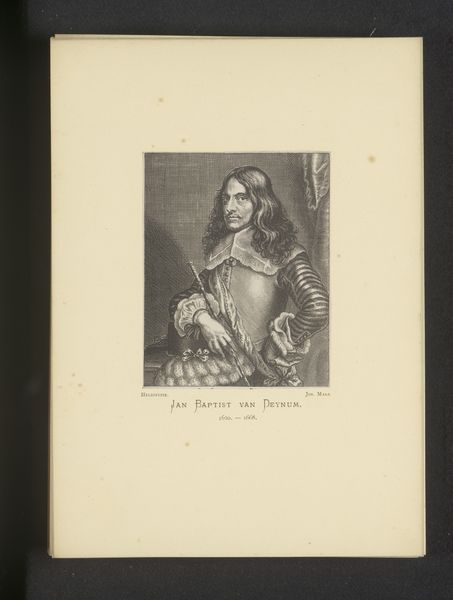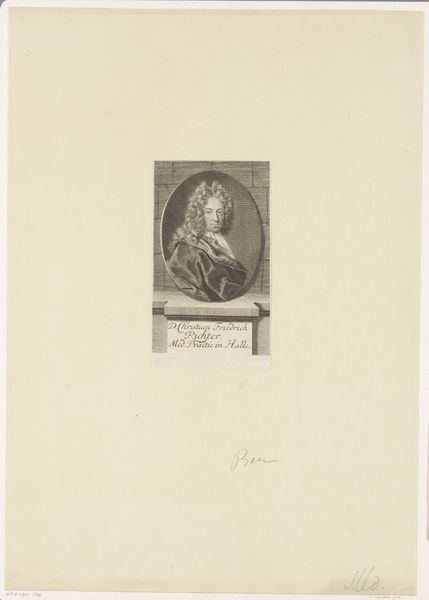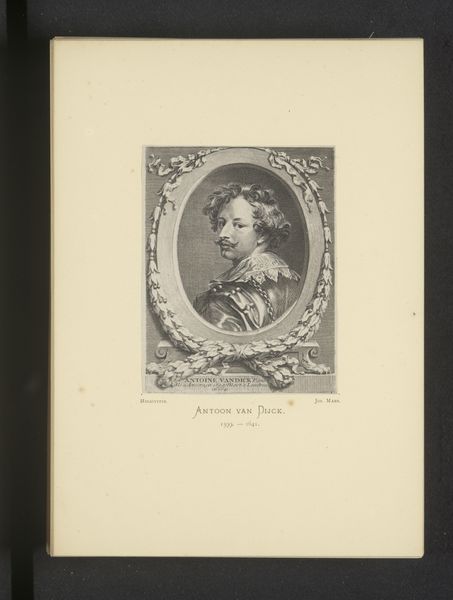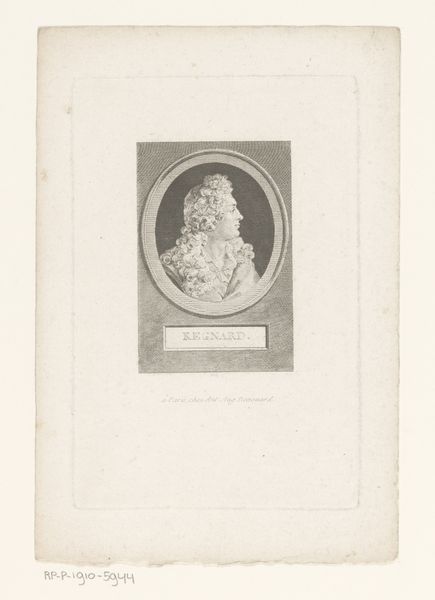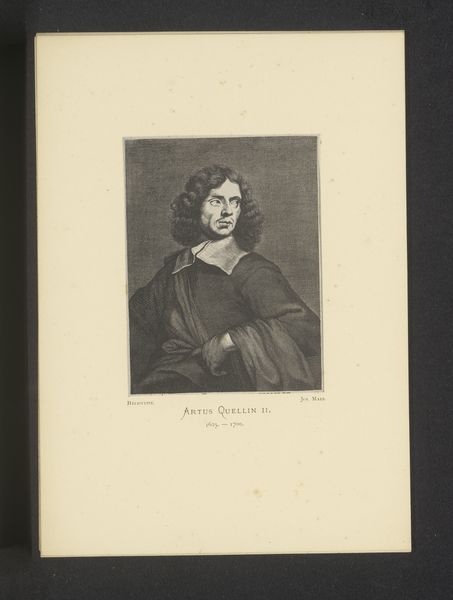
Reproductie van een gravure van een portret van Joseph Roettiers door Cornelis Martinus Vermeulen before 1877
0:00
0:00
Dimensions: height 121 mm, width 87 mm
Copyright: Rijks Museum: Open Domain
Curator: Here we have a reproduction of an engraving of Joseph Roettiers by Cornelis Martinus Vermeulen, likely created before 1877. Editor: The swirling lines immediately strike me. It has an airy, almost theatrical quality. It’s easy to imagine the elite society of that period. Curator: Yes, the Baroque style is evident in the ornamentation and the dynamic composition. There's the frame, for example. Note how it is both contained and exuberant. It creates a sense of controlled grandeur, wouldn't you agree? Editor: Controlled perhaps for Roettiers himself, the engraver to Louis XIV, but not, seemingly, for the image's ability to perpetuate systems of power. The portrait is about Roettiers' status, his visibility as a servant of the monarchy. Does the portrait tell us about class structures of the era? Curator: Well, portraiture, particularly engravings, were often commissioned by or for individuals to project an image of themselves that they wished to preserve. The engraving would be an enduring echo of Roettiers. An eternal persona to admire! The detail, achieved with meticulous lines, is stunning. Editor: I'm just not so sure the artistry overrides the socio-political function here. This image operates as a social document that promotes certain hierarchical values. That gaze feels undeniably complicit in the perpetuation of inequities. Curator: Hmm, I concede that it's impossible to isolate such imagery from the dynamics of its time. And of course, every representation embodies cultural assumptions. Editor: Ultimately, this is more than just a display of artistic skill or the representation of an individual. It's also about the legacy it produces. Images like these taught people how to see and accept the power structures around them. Curator: And, yet, centuries later we can re-interpret that representation; re-read the clues left by Vermeulen, so that we can find ourselves questioning those same structures of power today. A symbolic disruption? Perhaps a small victory.
Comments
No comments
Be the first to comment and join the conversation on the ultimate creative platform.
